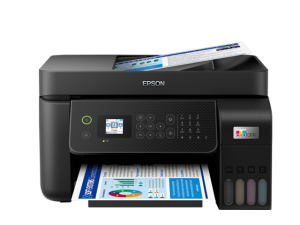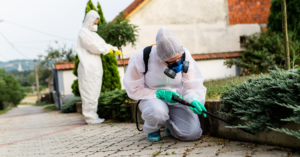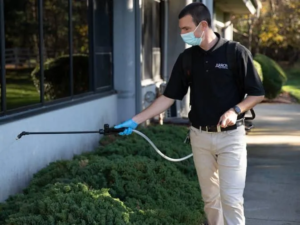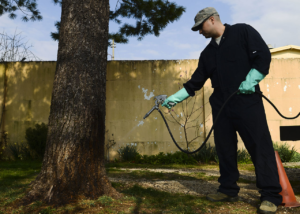Pests can cause direct damage to crops, gardens, homes and other structures. They can also spread diseases to people and other animals.
Prevention is a key part of Pest Control. Keep garbage and other materials away from houses, trim back branches and shrubs that can touch the house, and regularly clean and sanitize indoor trash bins. Contact Pest Control Morristown NJ now!

Ideally, pests should never get into homes and businesses. Prevention methods aim to keep them out through a combination of in-depth knowledge of pest behavior and routine property inspections. Preventive measures include sealing cracks and gaps, reducing food and water sources, and removing places for pests to hide. These measures can be physical, biological or chemical.
Physical methods may involve traps, bait stations and various types of screens. These are used to prevent the entry of pests or to remove them once they have invaded. The best physical preventive measure is to keep the building and its surroundings well maintained, excluding any weeds, trees or plants that could serve as bridges for pests. Also, all doors and windows should be fitted with fine mesh screens, preventing any entry by pests. Frequently check the screens for tears or gaps and repair them as needed.
Chemical preventive measures include insecticidal sprays, powders, dusts and gels. These are usually applied in the interiors or exteriors of the building. While these chemicals are effective, they often pose health risks to humans and animals when improperly used. They should only be used by trained and licensed pest control professionals, who must follow all the precautions listed on the product label to limit their toxicity to people and the environment.
Biological preventive measures involve the use of natural enemies to suppress pest populations. These can be predators, parasites or pathogens, and typically require a period of time before they can effectively control pests. Biological controls are not always practical or suitable for commercial settings, but they can be important in maintaining high levels of hygiene in the food preparation and retail environments.
Pests can spread germs that cause disease and can contaminate food. They can also trigger asthma attacks and allergies, damage furniture or clothing, or start fires by chewing through wiring. Some pests are venomous and can cause painful bites or severe allergic reactions. Pests can also cause structural damage, such as termite and wood-destroying bee infestations. In addition, pests can destroy crops and vegetation, as well as create environmental problems such as nutrient runoff.
Suppression
When pests occur, their numbers must be reduced before they can cause significant damage or become a nuisance. This process, known as suppression, is the first step in pest control. The best way to determine when pests are at a high enough level to require suppression is through monitoring. This involves regularly searching for and identifying the pests, how many there are, and what damage they’re doing. This can be done by scouting (for insect, mollusk, or vertebrate pests) or visual inspection. Monitoring also includes evaluating conditions such as weather, temperature, humidity, and other factors that can influence the number of pests.
Preventive measures are economical and environmentally responsible methods that reduce or eliminate the conditions that promote pest infestations. Regular cleaning of areas where pests live or breed prevents their establishment. Removing food, water, shelter, or overwintering sites limits their population sizes. Physical controls include barriers, screens, and traps that prevent pest entry into an area or limit their ability to reproduce. Other physical controls include modifying environmental factors such as temperature, moisture, and illumination. Chemicals may be used in combination with other pest control methods to suppress pest populations.
The goal of IPM is to balance the needs of people and the environment through a combination of prevention, suppression, and eradication methods. Prevention methods minimize the need for pesticides by making the landscape unfavorable for pests, altering cultural practices, and applying appropriate treatments. Suppression methods reduce the impact of pesticides on beneficial and nontarget organisms by using spot applications, reducing their exposure time, and applying them at appropriate times in the pest’s life cycle.
Eradication methods destroy the pest and any eggs or larvae they have, as well as their habitat, by digging, poisoning, or fumigating. This is usually done at a large scale. It is important to follow up on eradication programs to ensure the success of the treatment.
Understanding a pest’s biology and ecology helps managers decide whether to tolerate, avoid, or eradicate it. It can also guide the selection of management options and timing. For example, knowing that a pest requires certain nutrients to develop and thrive can help managers avoid it by ensuring those nutrients are available to other plants or animals.
Eradication
Pest control specialists are able to help with eradicating a pest problem when prevention and suppression fail. They are able to use various techniques, including insecticides, to eliminate infestations in both indoor and outdoor environments. In order to effectively eradicate an infestation, it is important that the specialist knows where the pests are located and the specific types of pesticides to use. This is because not all pesticides are appropriate for every situation, and using the wrong type can actually make the problem worse.
When a pesticide is used correctly, it should not only kill the current population of pests but also prevent new ones from emerging. However, the problem is that pesticides are not always very effective at killing all of the pests, and some of them are able to adapt and develop resistance to the chemicals. Therefore, the eradication of a pest population must be done in stages and may require several different types of chemicals. In order to minimize the development of pesticide resistance, it is advisable to use a rotation of chemicals and to apply them at different times in the life cycle of the pest.
In addition to the use of chemicals, biological pest control is another important part of a successful pest management program. Biological control involves the introduction of natural enemies, such as predators, parasitoids and disease organisms, that naturally limit the populations of pest insects, plant diseases or weeds. It is a form of integrated pest management and can be used alone or in combination with other methods of control.
Biological pest control is an essential part of human health and hygiene, particularly in public areas such as hospitals, retail or food preparation establishments. Without pest control programs, a number of harmful bacteria and viruses could be spread. For example, cockroaches carry allergens that are extremely irritating to the respiratory system of most people. These allergens can cause a variety of medical problems, and if left uncontrolled, can be very difficult to eradicate.
The term eradication refers to the permanent elimination of a pest from a specific region. This includes the permanent reduction to zero of the worldwide incidence of a disease, as has been achieved with smallpox and rinderpest.
Control
Pest control is the activity of managing pests in such a way as to minimise their damage to people, property or the environment. This can be done by prevention, suppression or eradication. It may also involve monitoring, inspection and education. It is an important aspect of hygiene management and essential for maintaining health, safety and a good standard of living. It is also important in preserving the value and structural integrity of homes, retail and food preparation environments and business premises.
Physical or mechanical pest control devices kill a pest directly, block them out or make their environment unsuitable. Examples include traps, nets, barriers and fences. Heat, radiation and electricity can also be used to alter an environment to prevent the spread of pests.
Chemical pesticides are substances that poison and kill unwanted organisms. They are a common form of pest control and may be applied by spraying, dusting or dipping. Only qualified pest control technicians can and should use chemical pesticides. They are most effective in combination with other control measures.
Biological pest control uses other organisms to kill or reduce the numbers of pests. This can be achieved through predation, parasitism, herbivory or other natural mechanisms. Classical biological control involves the introduction of natural enemies of a pest into an area, either in small repeated batches or as a single large-scale release. The introduced organisms are usually bred in the laboratory or collected from elsewhere in the world.
Pest monitoring helps to determine whether the pest population is above threshold levels and needs action. It can be done by checking traps, bait stations or other devices, or through scouting. Monitoring can also include checking environmental conditions such as temperature and moisture.
To minimize the risk of exposure to pesticides, it is important to cover up food and utensils while spraying. Surface sprays should be sprayed away from areas that are regularly touched and in out-of-the-way places, such as skirting boards. The use of baits is also a safer option, especially when children and pets are present. Bats can be used to control mosquitoes and other insect pests but are susceptible to rabies and should only be handled by certified bat handlers.








